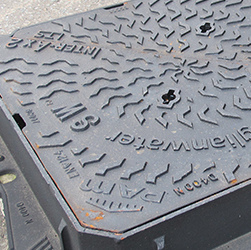
Could the Government’s change of course on SuDS prove fatal?
Changing course on mandating SuDS in new developments
With the momentum around responsibility for mandating SuDS in new developments having moved to local planning departments, bypassing the Flood and Water Management Act, there is now the clear potential for the emergence of a piecemeal approach.
The wider surface-water retention and run-off issues affecting a region could be sidelined in favour of local concerns, even resulting in SuDS installations being counterproductive.
Alternative approach to Flood and Water Management
On 12th September Defra announced a consultation across industry which called for views on an alternative approach to the one envisaged in the Flood and Water Management Act 2010, stating The Government has listened, and in response now wishes to consult on delivering sustainable drainage systems through changes to the current planning regime.
The consultation states that the method would use the National Planning Policy Framework, which both means the change will only cover developments of 10 houses or more, and decision-making will rest with local planning departments. The new arrangements are due to come into force in spring 2015.
By nature, local planning looks at local needs when it comes to new development, and not at the wider context. SuDS has to be holistic rather than site-specific to work properly, looking at the crucial ramifications downstream of new installations. Moving the problem onto someone elses patch could result in a nightmare scenario, when more joined-up thinking might have mitigated this risk.
Future role for SuDS Approval Boards
The new consultation also leaves the future role of SuDS Approval Boards (SABs), which were being set up locally as required by the Flood Act 2010, mired in confusion. Maintenance requirements and responsibilities also still require clarification So who owns the new asset, and should therefore maintain it? The issue of adoption is crucial, but its purely down to how the local authority enforces it, and could leave the taxpayer with huge maintenance costs.
The bottom line is nobody is making local planners think holistically, and the proof will be in the pudding,
Gareth Twohey, National Sector Manager for Utilities, KEYLINE
SEND YOUR COMMENTS TO BUILDINGTALK
READ MORE HOT TOPICS
Latest news

29th April 2025
Senior pledges to ‘bee’ part of the solution with new biodiversity initiative
Senior Architectural Systems has installed its first on-site beehive, marking another step forward in its commitment to sustainability and biodiversity.
Posted in Articles, Building Industry News, Building Products & Structures, Building Services, Curtain Walling, Doors, Glass, Glazing, Innovations & New Products, news, Restoration & Refurbishment, Retrofit & Renovation, Sustainability & Energy Efficiency, Walls, Windows
29th April 2025
West Fraser range delivering key benefits for South-East carpentry company
An experienced carpenter and building site manager who has recently set up his own company is using high performance panel products from the West Fraser range.
Posted in Articles, Building Industry News, Building Products & Structures, Building Systems, Case Studies, Garden, Restoration & Refurbishment, Retrofit & Renovation, Sustainability & Energy Efficiency, Timber Buildings and Timber Products
29th April 2025
CPD Courses Available Online From Ecological Building Systems
Ecological Building Systems, a leading supplier of natural building products for sustainable construction, has revealed its comprehensive CPD programme for the year ahead.
Posted in Articles, Building Industry Events, Building Industry News, Building Products & Structures, Building Services, Continuing Professional Development (CPD's), Information Technology, Innovations & New Products, Insulation, Restoration & Refurbishment, Retrofit & Renovation, Seminars, Sustainability & Energy Efficiency, Training, Walls, Waste Management & Recycling
29th April 2025
WindowBASE launches new prospect databases at FIT Show
Visit WindowBASE at the FIT Show to see first-hand how it helps companies find new customers – the company is launching an easy-to-use, intuitive platform on Stand G16 at the NEC Birmingham from 29th April – 1st May.
Posted in Articles, Building Industry Events, Building Industry News, Building Products & Structures, Building Services, Doors, Exhibitions and Conferences, Glass, Glazing, Information Technology, Innovations & New Products, Posts, Publications, Research & Materials Testing, Restoration & Refurbishment, Retrofit & Renovation, Windows
 Sign up:
Sign up: